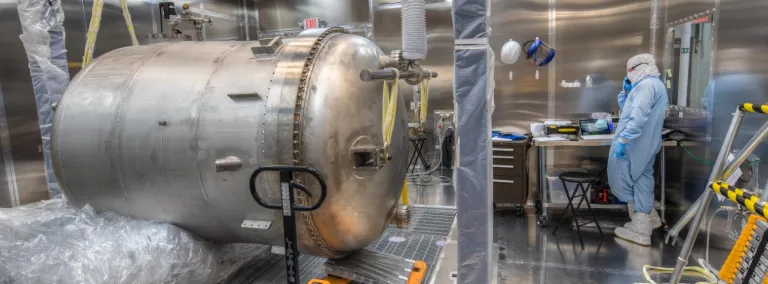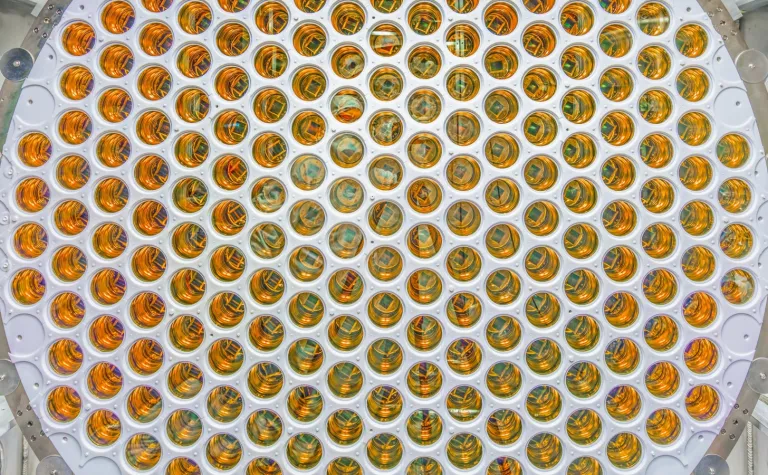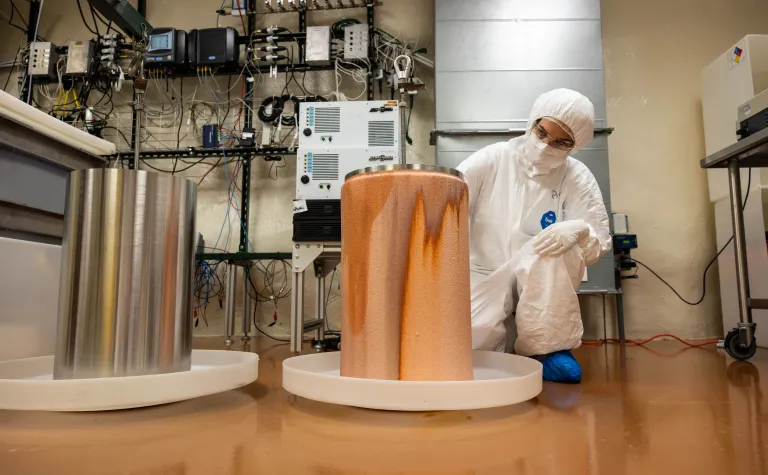Enhancing the search
Changes in LUX's design optimize LZ's search for dark matter
In 2013, the Large Underground Xenon detector (LUX) at Sanford Underground Research Facility (Sanford Lab) was named the most sensitive dark matter detector in the world. In the global search for Weakly Interacting Massive Particles (WIMPs), a candidate for dark matter, LUX was preforming exceedingly well.
So why did the collaboration decommission LUX in 2016? And why are they building a larger detector—LUX-ZEPLIN (LZ)—in it's place?
"The search for dark matter is a numbers' game," said Markus Horn, Sanford Lab research scientist and member of the LZ collaboration. "We're waiting for a dark matter particle or weakly interacting massive particle (WIMP) to interact with the xenon atoms in the detector. The likelihood of such an interaction depends on how many xenon atoms we have."
By sizing up the experiment, researchers increase their chances of witnessing rare WIMP interactions with a larger volume to hold xenon. Horn said that, while the size of the detector isn't the only way researchers are enhancing the search, it's a good starting point.
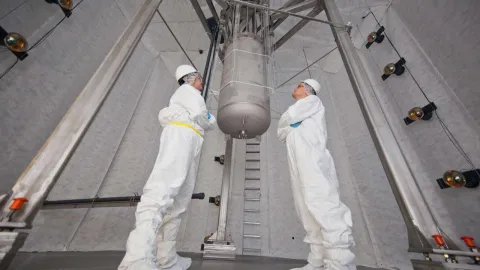
LUX cryostat
To increase the amount of xenon atoms in a given volume, scientists cool xenon gas to very low temperatures until it becomes liquid. To keep the experiment cold, it is housed in a double-walled titanium vessel to maintain the low temperature, a cryostat.
The LUX cryostat held 380 kilograms of liquid xenon.
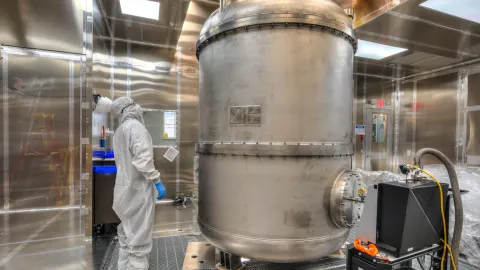
LZ cryostat
LZ will hold 10 tons of liquid xenon, over 26 times the volume previously contained by LUX. This increases the chances for a WIMP to collide with a xenon atom, causing a series of signatures to be detected.
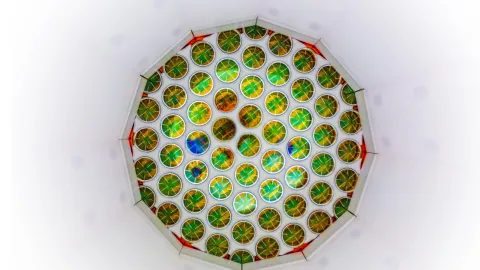
LUX PMTs
Essential to the detection of WIMP signatures are two arrays of photomultiplier tubes (PMTs), housed at the top and bottom of the cryostat.
The arrays in LUX held a combined 122 PMTs, each with a two-inch diameter.
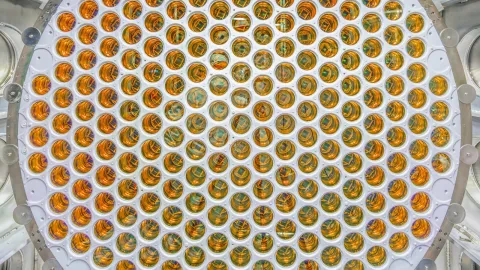
LZ PMTs
With a larger volume of xenon to monitor, researchers have designed larger PMT arrays. LZ will boast a total of 494 PMTs, three inches in diameter, in the top and bottom arrays.
To optimize both their detection and veto capabilities, researchers have included additional PMTs in the skin and dome structures of the detector.
"In addition to the size, we are improving every aspect of the experiment that we can," Horn said.
To transport and store the xenon, LUX previously used eight compressed gas cylinders. LZ will use 200 of these cylinders stored in a newly outfitted room outside the laboratory underground.
More xenon means a larger, more complex circulation system. Previously, the pumps exchanged 25 liters of purified xenon gas per minute. The small pumps will be replaced with large compressors capable of circulating xenon efficiently. Now, that number will be closer to 200 liters per minute.
A xenon tower outside the water tank will allow xenon to be heated to its gaseous form, purified, then re-liquified before it is reintroduced into the detector again.
The signal readouts for all photomultipliers and sensors amount to over 1000 cables which will run out of the detector and into computer racks. Also, the voltages required to create the electric field over the increased detector size are significantly higher.
"Overall, there are far more challenges, more sub-systems and simply far more pieces to this experiment - all bigger and better than before”, said Horn.

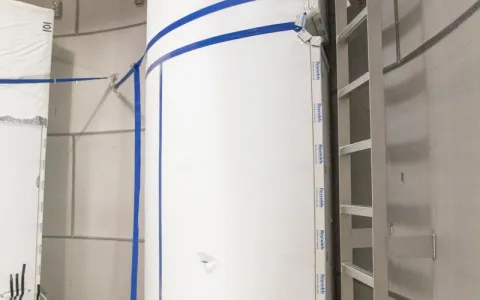
Increasing veto detection
LUX relied on the water tank as a veto detector, helping researchers rule out extraneous signatures.
In addition to the water tank, LZ will improve veto detection by installing nine acrylic vessels around the cryostat, filled with a liquid scintillator and and monitored by larger PMTs (8-inch diameter) within the water tank. This system allows researchers to further reduce backgrounds by by observing interactions outside the detector.
